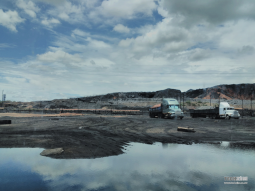
For such a poor country, Zimbabwe has an embarrassment of natural resources. We have almost every precious mineral you can think of in large quantities.
Even in the fictional world of Vibranium, Zimbabwe is blessed too. It was hogwash but Kadoma was on the map in the electrically charged rocks stakes.
Back in the real world, just when we thought it couldn’t get any crazier, we heard about vast amounts of untapped oil and natural gas somewhere in this small country of ours. Africa’s largest reserves at that.
The key word there is – untapped. For the other already surveyed minerals the keyword there is ‘under-tapped.’
We talked about the lithium deposits that are apparently under every house in the country. The once not-so-precious white gold is a key component in batteries. As a result, demand for it is growing as electric vehicles gain popularity.
Zimbabwe is just starting to mine this mineral but it’s still the wild west in that area.
We are strutting atop Africa’s largest and the world’s fifth-largest Lithium reserves. Good enough to supply 20% of the world’s demand apparently.
We are literally sitting on gold, white gold. However, unlike yellow gold, which has stayed valuable for millennia, we have to hit the iron while it’s still hot with Lithium.
Some precious minerals lose their preciousness
Coal had its time in the sun decades ago. However, as the world turned to greener sources of energy, coal lost some of its shine.
The Russia- Ukraine war has seen Russia close their natural gas tap which has led to some European countries giving coal a second look. That may be but coal is unlikely to ever reach its former highs.
The same goes for asbestos. It was once much more valuable than it is today. Then we found out some types of asbestos made people sick and the scientific community put in extra hours in the lab and came up with good synthetic alternatives.
This has happened to many minerals over the years. So, sitting on large reserves does not mean anything. We have to extract these minerals whilst the world still values them.
Lithium’s days may are numbered too
Lithium still has years on battery makers’ grocery lists, with demand projected to grow by over 300% from 2022 levels by 2030, but work is already underway to reduce demand.
Work on sodium-ion batteries continues. As do other types of batteries that do not use lithium. We have seen some graphene batteries hit the market lately.
While these may not be ready to unseat lithium, who knows what advances they will make in the coming years?
We have all been watching these lithium-ion battery alternatives for years but there’s work in other fields that could contain lithium demand too.
The X-Engine
LiquidPiston is working on the X-Engine and claims their rotary engines are the first disruption to engine technology in over a century.
These new engines are said to deliver up to 10x the power-to-weight ratio of legacy engines. They are also 30% more fuel efficient while they are at it. To top it off, the engines are smaller and quieter too.
As if that’s not enough, these rotary engines have only a few moving parts meaning there are fewer points where stuff could go wrong. Leading to better reliability and cheaper maintenance.
You can geek out on the specifics here.
Why are we talking about these engines? Well, experts foresee a lithium shortage in the future. One mostly caused by politics, as China exerts too much control on worldwide lithium production and lithium battery production.
With this in mind, efforts to reduce reliance on lithium as the world goes green are on overdrive.
What the X-Engine provides is a way for new gasoline cars to use way less fuel. However, it is in hybrid cars that the X-Engine is expected to shine the brightest.
With this more powerful yet smaller and lighter X-Engine, hybrid electric cars can use 80% smaller batteries.
That right there means approximately 80% less lithium demand in those particular hybrid electric cars.
The X-Engine is still under development and so it will be a few years before it hits the market. That is if it even gets to hit the market.
So, it is not given that it will impact lithium demand in the projected way. Nonetheless, I found it interesting. I wonder what you think about it.
Zimbabwe’s real problem
While what we discussed may prematurely lour Lithium’s shine, it may not matter much to the average Zimbabwean.
The question we have to answer is, even if Zimbabwe does extract its Lithium whilst it’s still in demand, will the public actually benefit from that?
If the past is anything to go by, the Lithium and oil won’t change much for you and me.
So, would it be a shame if our lithium deposits lose value unextracted? I don’t know how to answer that.
All I know is that whilst some stockpile lithium mining claims, not actually mining anything and some complain about the Chinese controlling too many lithium mines in the country, the clock is ticking on lithium’s time in the sun.
So, it does appear as if worrying about lithium-ion battery alternatives and X-Engine is a little premature when we cannot even get the lithium out of the ground. Worse still, we may not win on our fight to get some of the lithium processed in the country.-techzim

